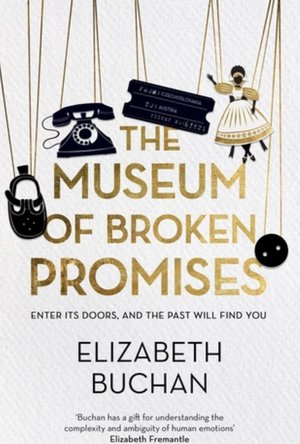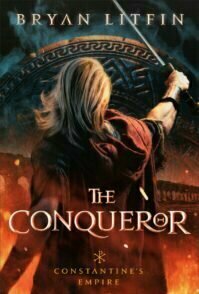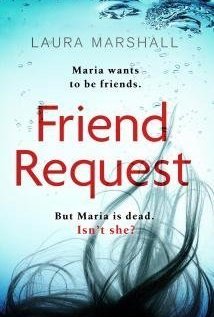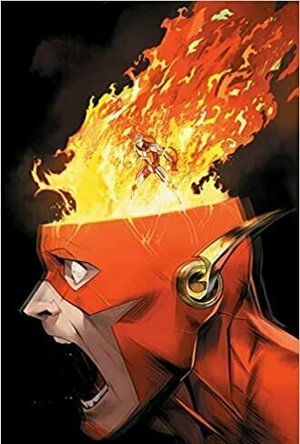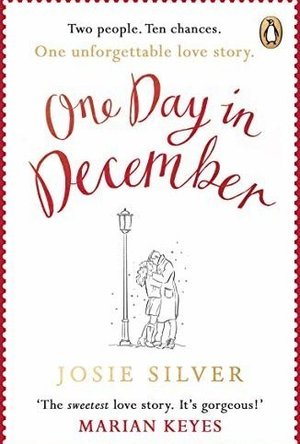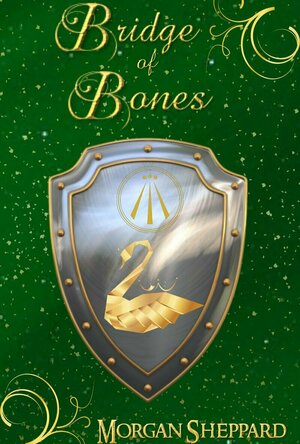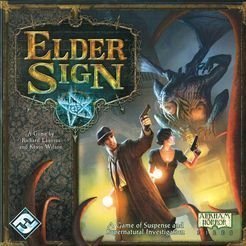Search
Search results
Ivana A. | Diary of Difference (1171 KP) rated The Museum of Broken Promises in Books
Apr 20, 2020
I am so excited to be part of the Book Buzz for The Museum of Broken Promises by Elizabeth Buchan. This lovely book is out on 02nd April, so don’t forget to grab your copy!
This book is quite emotional and heart-breaking from the very beginning until the very end. Based in Europe, in two timelines between now and 1985, we are witnesses to cold war, politics, fight for freedom and an extraordinary love story.
Today, Laure is living in Paris and she owns The Museum of Broken Promises - a place of wonder and sadness. Every object in the museum has been donated and each represents a moment of grief or terrible betrayal. Laure also has hidden objects of her own in there, from her own youth.
Back in 1985, Laure is in Prague, running away after her dad suddenly passes away. But her life here is very confusing. She is struggling to comprehend the dark politics that are taking over the city. But then she meets a young musician. And her love for him is forbidden and causes trouble and terrible consequences.
It is only years after having created the museum that Laure can finally come to terms with her past and celebrate the love she is feeling!
My Thoughts:
This is a very emotional book and I have learned that I need to be in a certain mood in order to be able to fully appreciate it. This is one of those books that leaves a tiny mark in your heart that you will always carry with you.
The story is amazing, we are witnessing a great life full of memories and stories of love, fight for freedom, betrayals, fears, ups and downs. It is so realistic that will make you shiver at times.
I have to admit, I found myself slightly confused at the beginning, trying to figure out which timeline I am currently in, but after a few chapters, I am able to make a difference and get a clearer picture of the story.
I loved the idea of this Museum of Broken Promises. It made me think of what object I could maybe leave there to represent my grief.
I have to admit, I didn’t truly connect with Laure as a main character. She seemed too closed in her own world and her sharing her story in the way that she did was very contradicting to me.
I loved Tomas though. He was my absolute favourite, the hero of this book.
This book is quite emotional and heart-breaking from the very beginning until the very end. Based in Europe, in two timelines between now and 1985, we are witnesses to cold war, politics, fight for freedom and an extraordinary love story.
Today, Laure is living in Paris and she owns The Museum of Broken Promises - a place of wonder and sadness. Every object in the museum has been donated and each represents a moment of grief or terrible betrayal. Laure also has hidden objects of her own in there, from her own youth.
Back in 1985, Laure is in Prague, running away after her dad suddenly passes away. But her life here is very confusing. She is struggling to comprehend the dark politics that are taking over the city. But then she meets a young musician. And her love for him is forbidden and causes trouble and terrible consequences.
It is only years after having created the museum that Laure can finally come to terms with her past and celebrate the love she is feeling!
My Thoughts:
This is a very emotional book and I have learned that I need to be in a certain mood in order to be able to fully appreciate it. This is one of those books that leaves a tiny mark in your heart that you will always carry with you.
The story is amazing, we are witnessing a great life full of memories and stories of love, fight for freedom, betrayals, fears, ups and downs. It is so realistic that will make you shiver at times.
I have to admit, I found myself slightly confused at the beginning, trying to figure out which timeline I am currently in, but after a few chapters, I am able to make a difference and get a clearer picture of the story.
I loved the idea of this Museum of Broken Promises. It made me think of what object I could maybe leave there to represent my grief.
I have to admit, I didn’t truly connect with Laure as a main character. She seemed too closed in her own world and her sharing her story in the way that she did was very contradicting to me.
I loved Tomas though. He was my absolute favourite, the hero of this book.
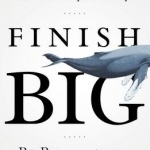
Finish Big: How Great Entrepreneurs Exit Their Companies on Top
Book
Bo Burlingham, the bestselling author of Small Giants, returns with Finish Big, an original guide to...
TravelersWife4Life (31 KP) rated The Conqueror (Constantine's Empire, #1) in Books
Feb 24, 2021
Have you ever opened a package and immediately felt giddy over the book that popped out? Well, I will be honest that is how I felt about this book. The cover pulls you in, the weight and feel of the paper further builds up the hopes in your mind, and then to cap it all off, the description is intriguing! Did I mention I got a hardcover edition?
Bryan Litfin is a new to me author with a very great writing style. He pulls you in with vivid characters, drama, battles, and dreams. I loved the period and setting, and I am so thankful for the research Bryan Litfin put into making this book believable and accurate. The characters were pretty realistic, and they chose believable courses of action. Although at times I marveled at their courage! The Religious aspects of the book were spot on for the period (but more on that in a bit), and I truly felt like I was back in time facing off against the lions with the characters. Both Flavia and Rex captured me from the first page, and I enjoyed getting to go on their journey (But I am curious to see what happens to them next).
On the religious aspect. I usually only review Christian Fiction. This is not your normal overtly Christian Fiction. It does not mention God in the sense of having a personal deep abiding relationship with him. He is thought of more as a deity and mostly mentioned in passing. He is not the focus of this story, as most people expect from Christian Fiction. Yet to clarify it is not primarily listed as Christian Fiction, but Ancient, Historical, Romance with a Christian fiction genre thrown in there. Personally, if this book were to be marketed directly to a non-Christian audience, I could see it doing very well (maybe even having a movie made of it) but directing it towards Christians… I do not think it will go well. Also, because it has sexual connotations throughout the story, as well as taking an odd (period correct though) stance on women.
Overall, I give it 2 out of 5 stars for the great research, interesting story plot, and vivid characters. But I would NOT recommend it to anyone who is not sure of their faith, has problems with reading sexual references, or an impressionable audience. I would also recommend the publisher Revell not label it as Christian Fiction.
*I volunteered to read this book in return for my honest feedback. The thoughts and opinions expressed within are my own.
Bryan Litfin is a new to me author with a very great writing style. He pulls you in with vivid characters, drama, battles, and dreams. I loved the period and setting, and I am so thankful for the research Bryan Litfin put into making this book believable and accurate. The characters were pretty realistic, and they chose believable courses of action. Although at times I marveled at their courage! The Religious aspects of the book were spot on for the period (but more on that in a bit), and I truly felt like I was back in time facing off against the lions with the characters. Both Flavia and Rex captured me from the first page, and I enjoyed getting to go on their journey (But I am curious to see what happens to them next).
On the religious aspect. I usually only review Christian Fiction. This is not your normal overtly Christian Fiction. It does not mention God in the sense of having a personal deep abiding relationship with him. He is thought of more as a deity and mostly mentioned in passing. He is not the focus of this story, as most people expect from Christian Fiction. Yet to clarify it is not primarily listed as Christian Fiction, but Ancient, Historical, Romance with a Christian fiction genre thrown in there. Personally, if this book were to be marketed directly to a non-Christian audience, I could see it doing very well (maybe even having a movie made of it) but directing it towards Christians… I do not think it will go well. Also, because it has sexual connotations throughout the story, as well as taking an odd (period correct though) stance on women.
Overall, I give it 2 out of 5 stars for the great research, interesting story plot, and vivid characters. But I would NOT recommend it to anyone who is not sure of their faith, has problems with reading sexual references, or an impressionable audience. I would also recommend the publisher Revell not label it as Christian Fiction.
*I volunteered to read this book in return for my honest feedback. The thoughts and opinions expressed within are my own.
BookInspector (124 KP) rated Friend Request in Books
Sep 24, 2020
I got kind of sucked in from the first pages of this book. It started quite idyllic, a single mother with her little boy. The pressure slowly building up after Louise receives the friend request, and it continues throughout the whole book.
Our main character is, of course, Louise, even though she had a tough divorce which broke her, she got her life together and is a successful businesswoman. Throughout the book, we meet a lot of unique characters, not only from her present but from the past as well. I really liked Louise as a character, she proved to me, that people are able to change.
The narrative, that is the part of this book which I really loved. It is told from a single perspective, but the plot is very well crafted and filled with a lot of feelings, emotions and fantastic twists and turns. It is pretty hard to describe it without spoilers, but let’s try. I do have to mention, that this novel is about bullying, drugs and its consequences to peoples lives. Louise has done something really bad when she was at school, and that thing is haunting her 25 years later. The author does not leave it to this disappearance of Maria only, she spices it up with a ton of twists and illusions. I should say that Laura is a master for creating an illusion.
The plot was time travelling between the present and 1989, revealing the events that took place little by little, and creating even more suspense and wish to find out more. One thing that really annoyed me was that the author exaggerated the character’s secrets, and when you expect something grand and you receive a very uninteresting surprise, it kind of left me disappointed. :/ Another thing what really annoyed me, the way drug use was portrayed in this book. I think drug use is a serious issue, and shouldn’t be portrayed as “cool” or as a “not a big deal”, especially when it comes to school kids.
This was a very well thought through novel, with easy language and overall great writing style. I liked the not-too-long, not-too-short chapters, and I think that the ending of this book was incredibly unexpected, and rounded this story really nicely. So, to conclude, I do strongly recommend this compelling and chilling book, filled with incredible story, unexpected turns, and things which are not as they seem to be. I hope you will enjoy it as much as I did.
Our main character is, of course, Louise, even though she had a tough divorce which broke her, she got her life together and is a successful businesswoman. Throughout the book, we meet a lot of unique characters, not only from her present but from the past as well. I really liked Louise as a character, she proved to me, that people are able to change.
The narrative, that is the part of this book which I really loved. It is told from a single perspective, but the plot is very well crafted and filled with a lot of feelings, emotions and fantastic twists and turns. It is pretty hard to describe it without spoilers, but let’s try. I do have to mention, that this novel is about bullying, drugs and its consequences to peoples lives. Louise has done something really bad when she was at school, and that thing is haunting her 25 years later. The author does not leave it to this disappearance of Maria only, she spices it up with a ton of twists and illusions. I should say that Laura is a master for creating an illusion.
The plot was time travelling between the present and 1989, revealing the events that took place little by little, and creating even more suspense and wish to find out more. One thing that really annoyed me was that the author exaggerated the character’s secrets, and when you expect something grand and you receive a very uninteresting surprise, it kind of left me disappointed. :/ Another thing what really annoyed me, the way drug use was portrayed in this book. I think drug use is a serious issue, and shouldn’t be portrayed as “cool” or as a “not a big deal”, especially when it comes to school kids.
This was a very well thought through novel, with easy language and overall great writing style. I liked the not-too-long, not-too-short chapters, and I think that the ending of this book was incredibly unexpected, and rounded this story really nicely. So, to conclude, I do strongly recommend this compelling and chilling book, filled with incredible story, unexpected turns, and things which are not as they seem to be. I hope you will enjoy it as much as I did.
Joe Goodhart (27 KP) rated The Flash, Vol. 9: Reckoning of the Forces in Books
Nov 30, 2020
This review pertains to the last three Flash trades, this one and the previous two.
Vol. 7: PERFECT STORM was quite good. I found it to be an interesting addition to the Gorilla Grodd stories. I was so inspired that I took it upon myself to read Vol. 8 & 9.
Vol. 8: FLASH WAR was like a ride on the BARRY ALLEN ANGST and SELF-LOATHING EXPRESS! But, even with that feeling in mind, I continued reading, eventually taking on the even more difficult task of taking on Vol. 9, which turned into yet another ride on that same depressing train ride!
I had read Vol 1, Joshua Williamson's first outing with "REBIRTH" Barry Allen's Flash. That one I found to be lifeless and missing something that Geoff John's Flash definitely had! But, I thought I'd give it one more try with that Gorilla Grodd story, which I turned out to like more than Vol. 1!
Vol. 9 just continues to show us overly-doubting-himself Barry as well as Wally West's Flash, only now with more angst as well as Barry-centric anger! Yeah, not good! NOPE!
It seems like writing for the Flash would be a fun writing assignment, then factoring in Wally West, it should be that much more fun! Unfortunately, that was not the case! DC allowed Barry to experience a sense of self-loathing and a lack of self-confidence, doing a huge disservice to a character with such a rich history as his!
Equally frustrating was the way Wally was treated! I know he and Barry are both comic characters, meaning they are not real. I get that, but I still felt the need to want to buy them each a short stack of pancakes (my treat, of course) and then offer to give each of them a "bro hug" and maybe a Mini Schnauzer puppy as well!
Oh, and how about that shit Williamson did in regard to the Speed Force? I am pretty sure <b>NO ONE</b> wanted there to be other Forces, especially ones as unnecessary as the ones he was serving up!
And how about that art? What the hell?!!? I felt like the dude was trying to emulate Scott Kolin's style of art, only failing to not even come close!
I understand there may be those of you reading this review who like Williamson's Flash. Hey, good for you. No, really. But, I am not gonna be one of them!
Shame on you, DC Comics! BOOOOOO!
Vol. 7: PERFECT STORM was quite good. I found it to be an interesting addition to the Gorilla Grodd stories. I was so inspired that I took it upon myself to read Vol. 8 & 9.
Vol. 8: FLASH WAR was like a ride on the BARRY ALLEN ANGST and SELF-LOATHING EXPRESS! But, even with that feeling in mind, I continued reading, eventually taking on the even more difficult task of taking on Vol. 9, which turned into yet another ride on that same depressing train ride!
I had read Vol 1, Joshua Williamson's first outing with "REBIRTH" Barry Allen's Flash. That one I found to be lifeless and missing something that Geoff John's Flash definitely had! But, I thought I'd give it one more try with that Gorilla Grodd story, which I turned out to like more than Vol. 1!
Vol. 9 just continues to show us overly-doubting-himself Barry as well as Wally West's Flash, only now with more angst as well as Barry-centric anger! Yeah, not good! NOPE!
It seems like writing for the Flash would be a fun writing assignment, then factoring in Wally West, it should be that much more fun! Unfortunately, that was not the case! DC allowed Barry to experience a sense of self-loathing and a lack of self-confidence, doing a huge disservice to a character with such a rich history as his!
Equally frustrating was the way Wally was treated! I know he and Barry are both comic characters, meaning they are not real. I get that, but I still felt the need to want to buy them each a short stack of pancakes (my treat, of course) and then offer to give each of them a "bro hug" and maybe a Mini Schnauzer puppy as well!
Oh, and how about that shit Williamson did in regard to the Speed Force? I am pretty sure <b>NO ONE</b> wanted there to be other Forces, especially ones as unnecessary as the ones he was serving up!
And how about that art? What the hell?!!? I felt like the dude was trying to emulate Scott Kolin's style of art, only failing to not even come close!
I understand there may be those of you reading this review who like Williamson's Flash. Hey, good for you. No, really. But, I am not gonna be one of them!
Shame on you, DC Comics! BOOOOOO!
Becs (244 KP) rated One Day in December: A Christmas Love Story in Books
Oct 2, 2019
One Day in December follows Laurie’s journey of finding the boy she saw and fell in love with at the bus stop on December 21, 2008. But when Sarah gets a new boyfriend, things take a turn for the worst for Laurie.
Sarah decides to throw a party for her friends and to introduce her new BF to Laurie. When he shows up, Laurie instantly recognizes him as the bus boy. But she doesn’t say anything to Sarah because she doesn’t want to ruin something good for her best friend. Over the years, Sarah and Jack start drifting apart and it eventually leads to their separation. But Laurie and Jack couldn’t get together because Laurie was married to Oscar.
The story then follows Laurie while she struggles with her marriage with Oscar and Jack who struggles with trying to love anybody else but Laurie. Until the ending where finally Jack and Laurie get their chance.
Characters:
Laurie – the main character. She’s quiet and a lovely friend and she didn’t deserve all the pain that she went through
Jack – HE’S THE BUS BOY. Has his moments where he’s kind of a butt nugget, but it’s understandable in the moments that he acts like that.
Sarah – BFF to Laurie but the two of them act more like sisters. I didn’t agree with how she acted towards Laurie in the middle of the book. But I do understand why she did it.
Oscar – Laurie’s husband (later on). A complete and utter douche – but what do you expect from someone who come’s from wealth
Lucille – Oscar’s mom
Cressida – ex of Oscar
Luke – husband to Sarah (later on)
Reasons why I rated it 5 stars:
1. As far as I could tell, there wasn’t any grammar or spelling errors that needed to be fixed. Everything seemed very well written and was very informative.
2. Josie Silver does a great job about giving a ton of background on not only the story and plot, but also each of the characters.
3. Speaking of the plot, it was absolutely amazing!
4. I would definitely reread One Day in December because I truly enjoyed this little story so much.
5. The overall story was very well-written and contained enough background to keep the reader going. I rather enjoyed this little novel!
“That is the thing about flowers, isn’t it? They’re lush and extravagant and demand your attention, and you think they’re the most exquisite thing, but then in the shortest time they’re not very lovely at all. They wilt and they turn the water brown, and soon you can’t hold onto them any longer.”
Sarah decides to throw a party for her friends and to introduce her new BF to Laurie. When he shows up, Laurie instantly recognizes him as the bus boy. But she doesn’t say anything to Sarah because she doesn’t want to ruin something good for her best friend. Over the years, Sarah and Jack start drifting apart and it eventually leads to their separation. But Laurie and Jack couldn’t get together because Laurie was married to Oscar.
The story then follows Laurie while she struggles with her marriage with Oscar and Jack who struggles with trying to love anybody else but Laurie. Until the ending where finally Jack and Laurie get their chance.
Characters:
Laurie – the main character. She’s quiet and a lovely friend and she didn’t deserve all the pain that she went through
Jack – HE’S THE BUS BOY. Has his moments where he’s kind of a butt nugget, but it’s understandable in the moments that he acts like that.
Sarah – BFF to Laurie but the two of them act more like sisters. I didn’t agree with how she acted towards Laurie in the middle of the book. But I do understand why she did it.
Oscar – Laurie’s husband (later on). A complete and utter douche – but what do you expect from someone who come’s from wealth
Lucille – Oscar’s mom
Cressida – ex of Oscar
Luke – husband to Sarah (later on)
Reasons why I rated it 5 stars:
1. As far as I could tell, there wasn’t any grammar or spelling errors that needed to be fixed. Everything seemed very well written and was very informative.
2. Josie Silver does a great job about giving a ton of background on not only the story and plot, but also each of the characters.
3. Speaking of the plot, it was absolutely amazing!
4. I would definitely reread One Day in December because I truly enjoyed this little story so much.
5. The overall story was very well-written and contained enough background to keep the reader going. I rather enjoyed this little novel!
“That is the thing about flowers, isn’t it? They’re lush and extravagant and demand your attention, and you think they’re the most exquisite thing, but then in the shortest time they’re not very lovely at all. They wilt and they turn the water brown, and soon you can’t hold onto them any longer.”
Debbiereadsbook (1623 KP) rated Bridge of Bones (Brodyr Alarch #3) in Books
Apr 15, 2025
I loved how Mascen and Delyth had their own paths to tread and that they went off in different ways for a time
I was gifted my copy of this book.
This is book 3 of the Brodyr Alarch series and it can be read as a stand alone. However, I personally think you should read the previous books first. It will give you a better picture of this world, the people in it, and most importantly, of the Gods who meddle with the lives of their subjects! Arianrhod and Cerridwen love their people, and only want what's best for them. They don't make it easy for them though!
Mascen is pulled away from his schooling, and he doesn't know why or where he is going. He only knows he needs to leave and find the girl in his dream, literally. Delyth has lived in the tower forever, and it's all she knows. The handsome stranger popping up at her window was a bit of a shock, but he made her think. About why she was there and who Eirlys is and what she wants from Delyth.
So, a couple things! I said in my review for book 2, Feathers and Foxes, that I was loving the fact that I did not know the tales that Ms Sheppard is using as the basis for these stories. HERE, she uses the Rapunzel tale so I knew that one. I could not remember how she got out of the tower, though. And I think that's why I loved this so much, because my mind was not clouded with Rapunzel's tale, it was all about Mascen and Delyth.
I also said I loved the fact that they are clean! Still stand by that! I don't think these would work so well if they were explicit. There is love and passion, it's just all laid out for you!
I loved that it took time for Mascen and Delyth to meet! Nearly half way through the book until they meet. I loved how they had their own paths to tread and that they went off in different ways for a time.
It's full of wonderful descriptions of every day things. Like getting up and having breakfast! Simple things made wonderful. People, places and things. The world building is fabulous and I loved reading about new places in the world.
Couple of characters from previous books pop up and it was great catching up with them. I still think I'm going to have to wait for Gerallt's book though!
A wonderful 5 star read.
*same worded review will appear elsewhere
This is book 3 of the Brodyr Alarch series and it can be read as a stand alone. However, I personally think you should read the previous books first. It will give you a better picture of this world, the people in it, and most importantly, of the Gods who meddle with the lives of their subjects! Arianrhod and Cerridwen love their people, and only want what's best for them. They don't make it easy for them though!
Mascen is pulled away from his schooling, and he doesn't know why or where he is going. He only knows he needs to leave and find the girl in his dream, literally. Delyth has lived in the tower forever, and it's all she knows. The handsome stranger popping up at her window was a bit of a shock, but he made her think. About why she was there and who Eirlys is and what she wants from Delyth.
So, a couple things! I said in my review for book 2, Feathers and Foxes, that I was loving the fact that I did not know the tales that Ms Sheppard is using as the basis for these stories. HERE, she uses the Rapunzel tale so I knew that one. I could not remember how she got out of the tower, though. And I think that's why I loved this so much, because my mind was not clouded with Rapunzel's tale, it was all about Mascen and Delyth.
I also said I loved the fact that they are clean! Still stand by that! I don't think these would work so well if they were explicit. There is love and passion, it's just all laid out for you!
I loved that it took time for Mascen and Delyth to meet! Nearly half way through the book until they meet. I loved how they had their own paths to tread and that they went off in different ways for a time.
It's full of wonderful descriptions of every day things. Like getting up and having breakfast! Simple things made wonderful. People, places and things. The world building is fabulous and I loved reading about new places in the world.
Couple of characters from previous books pop up and it was great catching up with them. I still think I'm going to have to wait for Gerallt's book though!
A wonderful 5 star read.
*same worded review will appear elsewhere
Debbiereadsbook (1623 KP) rated Daffodils and Dreams (Brodyr Alarch #4) in Books
Jun 16, 2025
wonderful instalment!
Independent reviewer for Archaeolibrarian, but I also purchased my copy of this book.
This is book 4 in the Brodyr Alarch series, and while not necessary, I do recomend that you read the other three boosk before this, or at LEAST, Sealed with A Curse, which is the prequel to this series. That will give you why these men were cursed, and what they did to be free of it. Harri mentions it a time or two in his musings. I loved them all.
Harri is preparing to be crowned the king of Melthkior, a middle brother in the Brodyr Alarch. His older brothers have no wish to be king, and Harri was always going to be crowned. Adding the Druids to the ceremony, and wanting to build a healing centre with their knowledge, was all Harri's idea. Ffion is the daughter of the head of the Druids. The two meeting start a cascade of events that leads to some dark times for them both. Will their choices, when the time comes, prove them worthy?
I've said this before and I will say it again, I am LOVING that these books are clean. Harri and Ffion take time to get to know each other, it's well over halfway through the book that they kiss, and I loved being made to wait. They both have a powerful reaction to the other, but it's kept low key. They know about it, but they don't voice it, not until things begin to go wrong.
I loved that Harri and Ffion both have to face their demons. I love that the tests are intriguing. I wasn't sure how they would go down. I loved that, while confident on the outside, both Harri and Ffion had doubts. Not about their love, that is clear, but about who they are inside and if they are good enough for each other and the roles they have been dealt.
This one is based around the Sleeping Beauty type tale. Harri and Ffion work hard to remove all chance of the curse being activated, but it takes a tiny slip of the foot to set it in motion and there is nothing harri can do then, but battle himself, almost.
I really REALLY enjoyed this instalment and I can't wait for the next one. I'm left feeling 4 stars, though, rather than 5 and I can only assume that it's a "me, not you" thing.
4 very VERY good stars
*same worded review will appear elsewhere
This is book 4 in the Brodyr Alarch series, and while not necessary, I do recomend that you read the other three boosk before this, or at LEAST, Sealed with A Curse, which is the prequel to this series. That will give you why these men were cursed, and what they did to be free of it. Harri mentions it a time or two in his musings. I loved them all.
Harri is preparing to be crowned the king of Melthkior, a middle brother in the Brodyr Alarch. His older brothers have no wish to be king, and Harri was always going to be crowned. Adding the Druids to the ceremony, and wanting to build a healing centre with their knowledge, was all Harri's idea. Ffion is the daughter of the head of the Druids. The two meeting start a cascade of events that leads to some dark times for them both. Will their choices, when the time comes, prove them worthy?
I've said this before and I will say it again, I am LOVING that these books are clean. Harri and Ffion take time to get to know each other, it's well over halfway through the book that they kiss, and I loved being made to wait. They both have a powerful reaction to the other, but it's kept low key. They know about it, but they don't voice it, not until things begin to go wrong.
I loved that Harri and Ffion both have to face their demons. I love that the tests are intriguing. I wasn't sure how they would go down. I loved that, while confident on the outside, both Harri and Ffion had doubts. Not about their love, that is clear, but about who they are inside and if they are good enough for each other and the roles they have been dealt.
This one is based around the Sleeping Beauty type tale. Harri and Ffion work hard to remove all chance of the curse being activated, but it takes a tiny slip of the foot to set it in motion and there is nothing harri can do then, but battle himself, almost.
I really REALLY enjoyed this instalment and I can't wait for the next one. I'm left feeling 4 stars, though, rather than 5 and I can only assume that it's a "me, not you" thing.
4 very VERY good stars
*same worded review will appear elsewhere
Purple Phoenix Games (2266 KP) rated Elder Sign in Tabletop Games
Jul 16, 2019 (Updated Aug 21, 2019)
One of the best parts of the board gaming experience is finding a fun group of people with whom to play! Sometimes, though, coordinating a game night is easier said than done. We all must occasionally forego the group experience and face the world as the Lonely Only. But fear not! The world of solo-play is a vast and exciting realm! What follows is a chronicle of my journey into the solo-playing world – notes on gameplay, mechanics, rules, difficulty, and overall experience with solo variations of commonly multiplayer games! I hope this will provide some insight as you continue to grow your collection, or explore your already owned games!
Disclaimer: There are many expansions for Elder Sign. I do not have any of them, nor do I have any gameplay experience with any of them. If and when I do get them added into my base game, I will either amend this review or write a new one! – L
In Elder Sign, players take on the roles of Investigators who must use their supernatural knowledge and keen wit to seal dimensional portals and prevent the Ancient Ones from entering our world and destroying humanity. Just another day at the office, right? Players take turns rolling dice to fight monsters and complete adventures that will reward them with artifacts, health and/or sanity, clues, or even Elder Signs – the symbols necessary for sealing away the Ancient Ones for good. Be careful, though – if you fail to complete an adventure, you will be harshly punished! I’m talking losing health and sanity, accidentally summoning monsters, or even bringing the Ancient One one step closer to our world! As a solo game, Elder Sign plays the same way as it would in a group setting. The only difference is that the solo player cannot use the ‘Assisting’ ability because there are no other players who can offer you aid. Besides that, gameplay remains the same – even a lone Investigator can put their dice to good use to ward off evil!
I enjoy playing Elder Sign as a solo game. Although mostly dominated by dice rolling, there is a fair amount of strategy required for this game. I don’t feel like I’m mindlessly rolling dice – I have to decide which adventures are attainable with my given items, and which rewards benefit me the most in my overall task. There are rewards and consequences to be weighed with every decision, so action must be taken with great thought. Because of the strategic implications, Elder Sign keeps me thoroughly engaged, even when playing solo, and that’s one reason why I keep coming back to it.
On the flip side, one thing that isn’t my favorite about Elder Sign is its reliance on dice rolls to progress in the game. Yeah, I know, it’s a dice game – what did I expect? Sometimes, though, you just can’t roll to save your life (quite literally, in this game) and that can make the game frustrating to play. A series of poor rolls can feel like they completely negate any strategy you’ve enacted and can unravel your entire plan. On a good dice-rolling day for me, I love this game! On a not-so-good dice-rolling day, I find it a little harder to enjoy myself. But hey – if it was totally easy, it wouldn’t be fun, right? One positive of this, I guess, is that I always have to be adjusting my strategy to take the current dice into account. I can’t just pick one strategy and run with it since almost all outcomes are dependent on the luck of the roll! Elder Sign keeps me on my toes, that’s for sure.
I got Elder Sign from Travis as a birthday present last year, and it has been a good addition to my collection. There is enough going on to keep me engaged the entire game, but not so much that I feel overwhelmed. And yeah, maybe I’m not always the greatest dice-roller, but that just makes me adapt my strategy to deal with the current situation. I have read that adding expansions makes the game even more enjoyable, and hopefully one of these days I’ll get to experience that for myself. For the time being, though, I’m content with the base game. If you enjoy Elder Sign, I recommend you try it solo – it doesn’t feel any different to play, and I think you’ll enjoy it just as much as a group game!
Disclaimer: There are many expansions for Elder Sign. I do not have any of them, nor do I have any gameplay experience with any of them. If and when I do get them added into my base game, I will either amend this review or write a new one! – L
In Elder Sign, players take on the roles of Investigators who must use their supernatural knowledge and keen wit to seal dimensional portals and prevent the Ancient Ones from entering our world and destroying humanity. Just another day at the office, right? Players take turns rolling dice to fight monsters and complete adventures that will reward them with artifacts, health and/or sanity, clues, or even Elder Signs – the symbols necessary for sealing away the Ancient Ones for good. Be careful, though – if you fail to complete an adventure, you will be harshly punished! I’m talking losing health and sanity, accidentally summoning monsters, or even bringing the Ancient One one step closer to our world! As a solo game, Elder Sign plays the same way as it would in a group setting. The only difference is that the solo player cannot use the ‘Assisting’ ability because there are no other players who can offer you aid. Besides that, gameplay remains the same – even a lone Investigator can put their dice to good use to ward off evil!
I enjoy playing Elder Sign as a solo game. Although mostly dominated by dice rolling, there is a fair amount of strategy required for this game. I don’t feel like I’m mindlessly rolling dice – I have to decide which adventures are attainable with my given items, and which rewards benefit me the most in my overall task. There are rewards and consequences to be weighed with every decision, so action must be taken with great thought. Because of the strategic implications, Elder Sign keeps me thoroughly engaged, even when playing solo, and that’s one reason why I keep coming back to it.
On the flip side, one thing that isn’t my favorite about Elder Sign is its reliance on dice rolls to progress in the game. Yeah, I know, it’s a dice game – what did I expect? Sometimes, though, you just can’t roll to save your life (quite literally, in this game) and that can make the game frustrating to play. A series of poor rolls can feel like they completely negate any strategy you’ve enacted and can unravel your entire plan. On a good dice-rolling day for me, I love this game! On a not-so-good dice-rolling day, I find it a little harder to enjoy myself. But hey – if it was totally easy, it wouldn’t be fun, right? One positive of this, I guess, is that I always have to be adjusting my strategy to take the current dice into account. I can’t just pick one strategy and run with it since almost all outcomes are dependent on the luck of the roll! Elder Sign keeps me on my toes, that’s for sure.
I got Elder Sign from Travis as a birthday present last year, and it has been a good addition to my collection. There is enough going on to keep me engaged the entire game, but not so much that I feel overwhelmed. And yeah, maybe I’m not always the greatest dice-roller, but that just makes me adapt my strategy to deal with the current situation. I have read that adding expansions makes the game even more enjoyable, and hopefully one of these days I’ll get to experience that for myself. For the time being, though, I’m content with the base game. If you enjoy Elder Sign, I recommend you try it solo – it doesn’t feel any different to play, and I think you’ll enjoy it just as much as a group game!
Kara Skinner (332 KP) rated Hart Broken (Cale & Mickey #1) in Books
Sep 10, 2019
Genre: Contemporary
Goodreads Rating: 4.75/5 stars
My rating: 4/5 stars
Mickey Hart doesn’t do one-night stands. Until she wakes up in a luxury penthouse. With nothing but a t-shirt. And no idea who it belongs to.
Enter Cale Windermere. Driven. Ambitious. Successful. And so gorgeous he could’ve walked straight out of a romance novel…
Except he can’t walk. Not that it ever stops him from getting what he wants. And he wants Mickey. Even if she’s keeping secrets from him.
This book…
Where do I even begin? It has a strong start and it stays strong. Mickey is awkward and funny. She starts out at the perfect chick lit character.
“Cale Windermere,” he said, sticking out his hand.
“C-Cale?”
“Yeah. Like the leafy green, just take off the K and replace with a C.”
Oh. My. God.
“And you are?”
“Uh…”
Cale raised an eyebrow, chuckling lightly.
Say something, Mickey.
“I-l’m, uh…”
Something intelligent. And preferably English.
With the help of a mental slap, Mickey willed herself to take his hand and shake it, a bit too eagerly. “I-I’m Mickey.”
It’s difficult not to like her. I like even more that she doesn’t really care Cale’s in a wheelchair and she doesn’t do anything stupid and awkward like kneel down so they’re eye level or act as if he’s an invalid. Even though she does notice the wheelchair, she is easily distracted by how attractive he is.
Carefully taking a sip, Mickey did a once over of the man sitting in front of her. Cale’s shirt was just fitted enough to show off the remarkably solid build of his upper torso. She jotted down a mental list of all his attractive attributes thus far.
Thick, unruly chocolate locks. Gorgeous emerald eyes. Award-winning smile.
And he had a long list of greats.
Great back. Great shoulders. Great chest. Great arms.
Really great arms.
She ran her nails over the hot ceramic.
You’d never think that something was wrong with him.
She wondered if he had great abs too.
So I love Mickey. And the farther I got into the book, the more complex she became. I found myself really wanting to know why she was so commitment shy and found it difficult to sleep in the same bed as someone.
I love Cale a lot too, although not as much as Mickey. He’s charismatic, sexy, and very much in love with Mickey. He’s everything you’d expect in a love interest. So much so, he’s a bit of a cliche. Just because he can’t walk doesn’t mean he’s not a stereotypical billionaire love interest.
Cale gets self-conscious about his disability at times, and he has a lot of emotional baggage from that and his ex wife. But he’s pretty easy to get, and I don’t feel the same complexity with him I do with Mickey. That being said, he does have flaws, and I love that. He gets mad at Mickey and fed up with her unwillingness to share.
“Essentially, you’re more than happy to fuck my brains out but you won’t stay by my side. How am I doing so far, Mickey?”
“Cale…”
“So I understand, okay? Well, I wouldn’t exactly call it understanding,” he corrected himself wryly. “But I get it. I get that you need your space. It didn’t take a fucking genius to figure that one out. And I’ve tried my best to respect that…”
True.
“And be patient…”
True.
“And understanding.”
All painfully true.
He suddenly looked exhausted. And he suddenly sounded exhausted, “But Jesus, Mickey.” Shaking his head slowly, Cale blew the hair out of his eyes and sighed, “You need to throw a guy a bone eventually.”
Gotta love that he’s human and isn’t an eternal patience machine. So Cale’s all right. However, the chapters from his point of view are really weird.
They’re short, in first person, and melodramatic. A lot of the time the reader doesn’t get to see where he is or what he’s doing. Instead, they just hear his internal thoughts about Mickey. That’s it. And they’re melodramatic and repetitive, especially in the beginning of the book. The farther into the book, the more fleshed out the chapters get. But a full star is knocked off for those earlier chapters.
Despite that, I definitely recommend reading this book. It’s darker than most contemporary romances, which is very refreshing, but it has plenty of light and hilarious moments. Definitely worth the read.
If you liked this review, or know someone who might like Hart Broken, then I’d definitely appreciate it if you shared this post with your friends. Thank you, and have a great day!
Goodreads Rating: 4.75/5 stars
My rating: 4/5 stars
Mickey Hart doesn’t do one-night stands. Until she wakes up in a luxury penthouse. With nothing but a t-shirt. And no idea who it belongs to.
Enter Cale Windermere. Driven. Ambitious. Successful. And so gorgeous he could’ve walked straight out of a romance novel…
Except he can’t walk. Not that it ever stops him from getting what he wants. And he wants Mickey. Even if she’s keeping secrets from him.
This book…
Where do I even begin? It has a strong start and it stays strong. Mickey is awkward and funny. She starts out at the perfect chick lit character.
“Cale Windermere,” he said, sticking out his hand.
“C-Cale?”
“Yeah. Like the leafy green, just take off the K and replace with a C.”
Oh. My. God.
“And you are?”
“Uh…”
Cale raised an eyebrow, chuckling lightly.
Say something, Mickey.
“I-l’m, uh…”
Something intelligent. And preferably English.
With the help of a mental slap, Mickey willed herself to take his hand and shake it, a bit too eagerly. “I-I’m Mickey.”
It’s difficult not to like her. I like even more that she doesn’t really care Cale’s in a wheelchair and she doesn’t do anything stupid and awkward like kneel down so they’re eye level or act as if he’s an invalid. Even though she does notice the wheelchair, she is easily distracted by how attractive he is.
Carefully taking a sip, Mickey did a once over of the man sitting in front of her. Cale’s shirt was just fitted enough to show off the remarkably solid build of his upper torso. She jotted down a mental list of all his attractive attributes thus far.
Thick, unruly chocolate locks. Gorgeous emerald eyes. Award-winning smile.
And he had a long list of greats.
Great back. Great shoulders. Great chest. Great arms.
Really great arms.
She ran her nails over the hot ceramic.
You’d never think that something was wrong with him.
She wondered if he had great abs too.
So I love Mickey. And the farther I got into the book, the more complex she became. I found myself really wanting to know why she was so commitment shy and found it difficult to sleep in the same bed as someone.
I love Cale a lot too, although not as much as Mickey. He’s charismatic, sexy, and very much in love with Mickey. He’s everything you’d expect in a love interest. So much so, he’s a bit of a cliche. Just because he can’t walk doesn’t mean he’s not a stereotypical billionaire love interest.
Cale gets self-conscious about his disability at times, and he has a lot of emotional baggage from that and his ex wife. But he’s pretty easy to get, and I don’t feel the same complexity with him I do with Mickey. That being said, he does have flaws, and I love that. He gets mad at Mickey and fed up with her unwillingness to share.
“Essentially, you’re more than happy to fuck my brains out but you won’t stay by my side. How am I doing so far, Mickey?”
“Cale…”
“So I understand, okay? Well, I wouldn’t exactly call it understanding,” he corrected himself wryly. “But I get it. I get that you need your space. It didn’t take a fucking genius to figure that one out. And I’ve tried my best to respect that…”
True.
“And be patient…”
True.
“And understanding.”
All painfully true.
He suddenly looked exhausted. And he suddenly sounded exhausted, “But Jesus, Mickey.” Shaking his head slowly, Cale blew the hair out of his eyes and sighed, “You need to throw a guy a bone eventually.”
Gotta love that he’s human and isn’t an eternal patience machine. So Cale’s all right. However, the chapters from his point of view are really weird.
They’re short, in first person, and melodramatic. A lot of the time the reader doesn’t get to see where he is or what he’s doing. Instead, they just hear his internal thoughts about Mickey. That’s it. And they’re melodramatic and repetitive, especially in the beginning of the book. The farther into the book, the more fleshed out the chapters get. But a full star is knocked off for those earlier chapters.
Despite that, I definitely recommend reading this book. It’s darker than most contemporary romances, which is very refreshing, but it has plenty of light and hilarious moments. Definitely worth the read.
If you liked this review, or know someone who might like Hart Broken, then I’d definitely appreciate it if you shared this post with your friends. Thank you, and have a great day!
